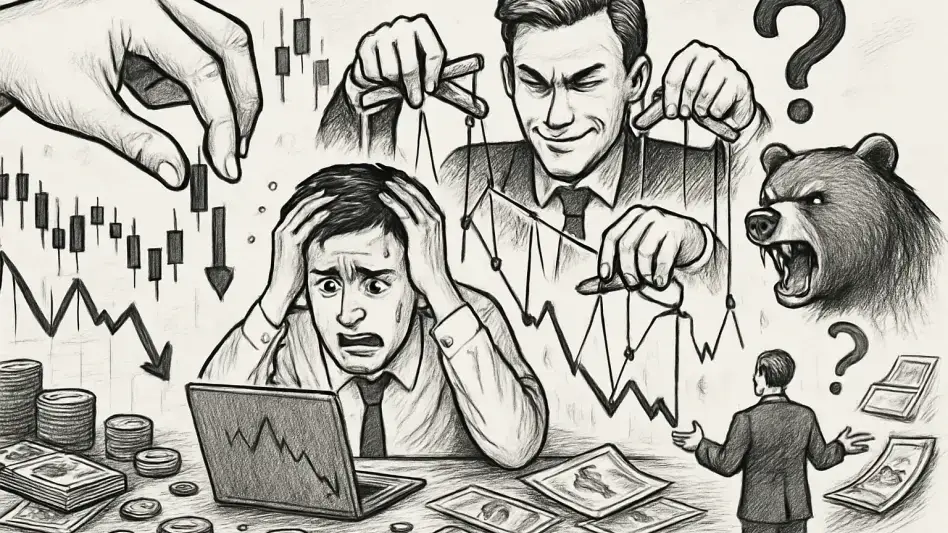In the fast-paced and ever-shifting world of financial markets, prosecuting cases of market manipulation has emerged as a daunting task for U.S. authorities, who are grappling with both legal intricacies and technological advancements that continuously reshape the landscape. The complexity of modern trading platforms, compounded by the advent of innovative financial instruments such as cryptocurrencies and non-fungible tokens (NFTs), has created a challenging environment where securing convictions is increasingly difficult. High-profile federal court decisions in recent years have laid bare the struggles faced by prosecutors, revealing a judicial system that is cautious about endorsing expansive or novel theories of fraud. These reversals of convictions highlight a critical gap between the rapid evolution of financial practices and the slower adaptation of legal frameworks designed to regulate them. As markets become more decentralized and complex, the task of proving criminal liability for manipulation often stumbles over evidentiary hurdles and ambiguous standards. This article explores the multifaceted obstacles that stand in the way of successful prosecutions, delving into the legal, procedural, and contextual issues that define this struggle. From proving intent in subtle price distortions to navigating uncharted territories of emerging markets, the path to accountability is fraught with barriers that demand attention and innovative solutions.
Unraveling the Complexity of Market Manipulation
The core difficulty in prosecuting market manipulation lies in demonstrating that a defendant’s actions have artificially distorted market prices in a manner disconnected from legitimate supply and demand dynamics. This task is far from straightforward, especially when dealing with fleeting price impacts, often referred to as “micro manipulations,” or trades conducted in open markets without explicit deceptive statements. Prosecutors must provide concrete evidence that a defendant’s behavior not only influenced prices but did so with the intent to deceive or harm other market participants. Such proof is elusive in environments where market movements are influenced by countless variables, obscuring the direct impact of any single actor’s conduct. The legal system often struggles to isolate manipulative actions from normal market volatility, creating a significant barrier to conviction. Furthermore, the burden of establishing a clear causal link between the defendant’s actions and the artificial price shift adds another layer of complexity, as courts demand rigorous evidence rather than speculative assertions. This challenge is particularly pronounced in digital or decentralized trading platforms, where traditional market oversight mechanisms may not apply, leaving prosecutors with limited tools to build a compelling case.
Beyond the issue of proving artificial price creation, the legal framework itself often appears ill-equipped to handle the nuances of modern financial systems. A notable example is the case of United States v. Eisenberg, where the defendant was found to have manipulated the price of a cryptocurrency token on a decentralized platform through strategic offsetting trades. Despite the court acknowledging the manipulative nature of these actions, the conviction was overturned due to improper venue and a lack of sufficient evidence to support fraud charges. The platform’s rules did not explicitly prohibit such conduct, highlighting a critical gap in legal standards for emerging financial technologies. This case illustrates how even when manipulation is apparent, procedural missteps or the absence of clear regulatory guidelines can derail prosecutorial efforts. It also raises questions about how well existing laws can adapt to novel trading environments where automated systems and decentralized structures challenge conventional definitions of market integrity. The judiciary’s insistence on strict adherence to established legal criteria often leaves little room for prosecuting innovative yet harmful practices that fall into gray areas of regulation.
Fraud Charges: A Fraught Alternative Path
When direct evidence of market manipulation proves hard to establish, prosecutors frequently turn to fraud charges, such as wire fraud, as an alternative means to hold defendants accountable. However, this approach comes with its own set of formidable challenges, as proving fraud requires demonstrating material misrepresentations or breaches of a duty of confidence—elements that are often contentious in financial transactions conducted at arm’s length. In such dealings, where no fiduciary relationship typically exists, courts are hesitant to impose liability without clear evidence of tangible harm or deceit. The legal threshold for fraud demands that prosecutors show not only that a misrepresentation occurred but also that it was significant enough to influence another party’s decisions, a standard that is difficult to meet in complex market scenarios. This high bar often results in dismissed charges or overturned convictions, as judicial scrutiny focuses on whether the alleged fraud aligns with traditional notions of property loss or explicit deceit, rather than perceived unfairness or unethical behavior in the marketplace.
The case of Johnson v. United States provides a stark illustration of these difficulties, where a former banker was initially convicted for manipulating currency prices to benefit his institution at a client’s expense. The prosecution relied on novel theories of fraud, including the “right-to-control” concept, which posited that the defendant deprived the client of essential pricing information. However, following a landmark Supreme Court ruling that invalidated this theory for lacking a traditional property interest, the conviction was reversed. The court also expressed skepticism about the alternative “misappropriation” theory, finding no clear fiduciary duty owed to the client in the transaction. This outcome underscores how rigidly courts adhere to established legal principles, often rejecting innovative prosecutorial arguments that attempt to stretch fraud definitions to cover modern financial practices. It also signals a broader judicial trend of limiting the scope of fraud charges in market contexts, leaving prosecutors with fewer viable options to address manipulative conduct that does not fit neatly into conventional legal categories.
A similar pattern emerged in United States v. Chastain, involving a manager at an NFT marketplace accused of insider trading by leveraging confidential information for personal gain. The conviction was vacated on appeal, with the court ruling that the misappropriated information must possess commercial value to the company to qualify as property under the wire fraud statute. This decision further narrows the prosecutorial toolkit, emphasizing that not every breach of trust or confidentiality rises to the level of criminal fraud. It highlights the judiciary’s reluctance to criminalize actions without a direct economic impact on a tangible asset, even in emerging digital markets where confidentiality can be a critical competitive advantage. For prosecutors, this ruling adds yet another hurdle, as they must now navigate stricter criteria for what constitutes actionable fraud, particularly in innovative sectors where norms and values are still being defined. The cumulative effect of such judicial decisions is a legal environment where fraud charges, once a fallback for manipulation cases, are becoming increasingly difficult to sustain.
Judicial Skepticism Toward Novel Legal Theories
A recurring theme in recent market manipulation cases is the judiciary’s growing skepticism toward expansive or untested theories of criminal liability advanced by prosecutors. Courts are displaying a marked preference for restraint, refusing to extend fraud or manipulation definitions into ambiguous areas of market behavior where explicit rules or duties are absent. This judicial conservatism often manifests as a rejection of arguments that seek to criminalize conduct based on perceived unfairness rather than concrete harm to traditional property interests. The trend reflects a broader concern that overreaching legal interpretations could chill legitimate market activity or impose liability in situations where intent and impact are unclear. As a result, prosecutors face an uphill battle in convincing courts to adopt innovative approaches, particularly when cases involve complex financial instruments or platforms that lack well-defined regulatory boundaries.
In the Eisenberg case, this judicial hesitance was evident when the court dismissed fraud charges due to the absence of explicit prohibitions against the defendant’s actions on the cryptocurrency platform. The government argued that the defendant implicitly misrepresented the value of collateral, but the court found no basis for such a claim without clear platform rules or conditions on borrowing. This ruling sends a strong message that courts will not infer criminal intent in the absence of established guidelines, placing the onus on regulators and platforms to define acceptable conduct more precisely. It also illustrates how judicial restraint can undermine prosecutorial efforts, especially in decentralized markets where traditional oversight is limited. For authorities, this creates a pressing need to adapt legal strategies to fit within the judiciary’s narrow interpretation of liability, often requiring a focus on more straightforward violations rather than complex or novel schemes.
The Johnson case further reinforces this pattern of judicial pushback, as the court rejected the prosecution’s reliance on the “right-to-control” theory and expressed doubt about the applicability of misappropriation in an arm’s-length transaction. This decision reflects a broader judicial inclination to prioritize legal clarity and traditional standards over expansive interpretations that might capture a wider range of market behavior. By insisting on tangible property harm as a prerequisite for fraud convictions, courts are effectively limiting the scope of criminal liability in financial markets, often to the frustration of prosecutors seeking to address sophisticated forms of manipulation. This trend suggests that future cases will need to be built on firmer legal ground, with clear evidence of deceit or duty breaches, rather than relying on innovative arguments that test the boundaries of existing law. The judiciary’s stance serves as a reminder that legal evolution must balance the need to address new forms of wrongdoing with the risk of over-criminalization in dynamic market environments.
Navigating Uncharted Waters in Emerging Markets
Emerging financial sectors, such as cryptocurrency exchanges and NFT marketplaces, present unique challenges for prosecuting market manipulation, as legal and regulatory frameworks struggle to keep pace with technological innovation. The absence of established norms and platform-specific rules often creates gray areas where criminal liability is difficult to establish, leaving courts grappling with how to apply traditional fraud and manipulation laws to novel contexts. These markets operate on decentralized or automated systems that differ significantly from conventional financial structures, complicating efforts to define and prove wrongdoing. Prosecutors must contend with a lack of precedent and regulatory clarity, which often results in overturned convictions or dismissed charges when courts find existing legal standards inapplicable. This dynamic underscores a critical gap between the rapid evolution of financial technology and the slower adaptation of the justice system, posing a persistent obstacle to accountability.
The Eisenberg and Chastain cases vividly illustrate these challenges in emerging markets, where the unique functionalities of digital platforms can blur the lines of legal responsibility. In Eisenberg, the decentralized nature of the cryptocurrency platform meant that traditional notions of fraud did not directly apply, as there were no explicit rules against the manipulative trading strategy employed. Similarly, in Chastain, the court struggled to fit the insider trading of NFTs into the wire fraud statute, ultimately requiring a commercial value to the misappropriated information that was not sufficiently demonstrated. These rulings highlight how the lack of defined duties or prohibitions in new financial arenas can undermine prosecutorial efforts, leaving harmful conduct unaddressed. They also point to the broader issue of regulatory lag, where innovation outpaces the development of legal safeguards, creating environments ripe for exploitation without clear paths to prosecution. For authorities, this necessitates a reevaluation of how to approach cases in uncharted territory, potentially requiring collaboration with technologists and regulators to craft frameworks that can effectively govern emerging markets.
Another dimension of this challenge lies in the judiciary’s reluctance to extend liability in the absence of clear harm or established market norms, further complicating prosecutions in novel sectors. Courts often prioritize restraint over innovation, as seen in the strict criteria applied to fraud charges in both Eisenberg and Chastain. This conservative approach, while protecting against overreach, can inadvertently shield manipulative actors in markets where rules are still forming, as legal standards fail to capture the nuances of digital transactions. The result is a legal landscape where emerging technologies present both opportunities for misconduct and significant barriers to accountability. Addressing this issue may require not only updated legislation but also a shift in judicial perspective to recognize the unique harms posed by manipulation in digital spaces. Until such changes occur, prosecutors will likely continue to face an uphill battle in securing convictions for conduct that, while potentially harmful, does not fit neatly into traditional legal molds, emphasizing the urgent need for adaptive strategies in an era of relentless financial innovation.
Shaping Future Strategies for Accountability
Reflecting on the judicial outcomes of recent high-profile cases, it becomes evident that the path to prosecuting market manipulation is riddled with obstacles, from proving artificial price distortions to navigating the ambiguities of fraud in modern financial contexts. Decisions in cases like United States v. Eisenberg, Johnson v. United States, and United States v. Chastain demonstrate a clear pattern of judicial restraint, with courts consistently rejecting novel theories of liability in favor of traditional legal standards. This conservative stance often leads to overturned convictions, even when manipulative conduct is acknowledged, as procedural issues or the lack of explicit rules undermine prosecutorial efforts. The challenges are particularly pronounced in emerging markets, where the absence of regulatory clarity leaves significant gaps in accountability, allowing potentially harmful practices to evade legal consequences. These rulings paint a picture of a legal system struggling to keep pace with the rapid evolution of financial technologies and practices.
Looking ahead, the focus must shift toward developing more robust and adaptive strategies to address market manipulation in a way that aligns with judicial expectations. Prosecutors might consider prioritizing cases with clear evidence of intent and tangible harm, such as spoofing, over more ambiguous practices that courts are reluctant to criminalize. Collaboration between legal authorities, regulators, and industry stakeholders could also play a pivotal role in establishing clearer guidelines for emerging markets, ensuring that platform rules and duties are well-defined to support future prosecutions. Additionally, advocating for legislative updates to better address the nuances of digital transactions could bridge the gap between innovation and accountability. As financial markets continue to evolve, a balanced approach that respects legal precision while tackling new forms of misconduct will be essential to safeguarding market integrity and protecting participants from manipulation in all its forms.








